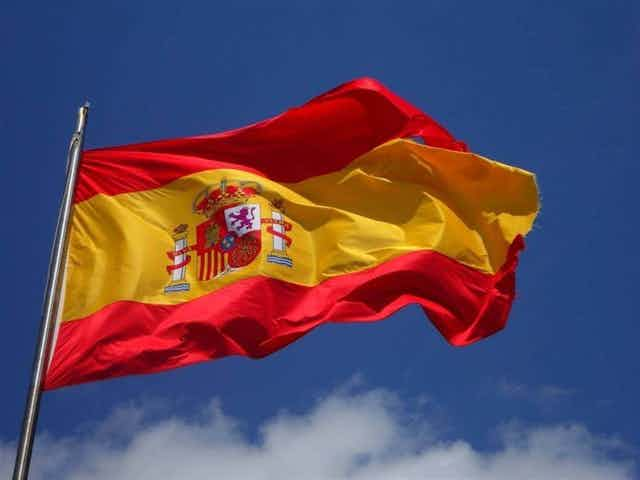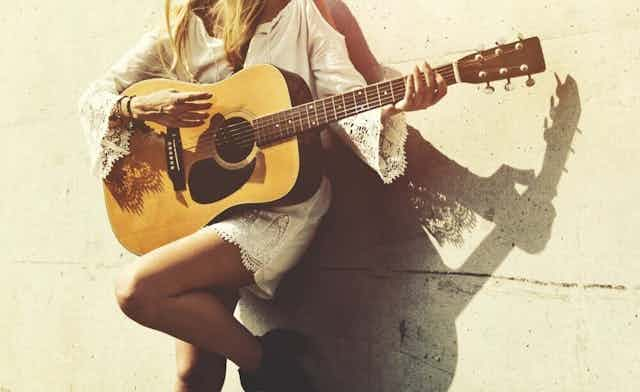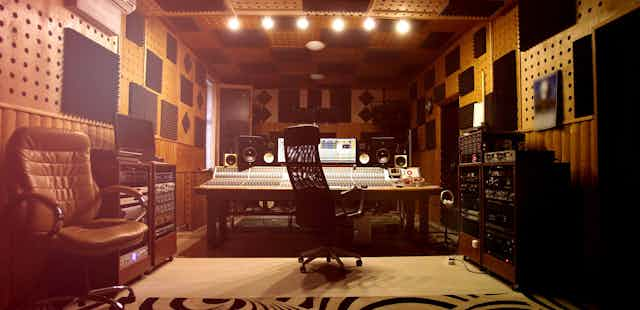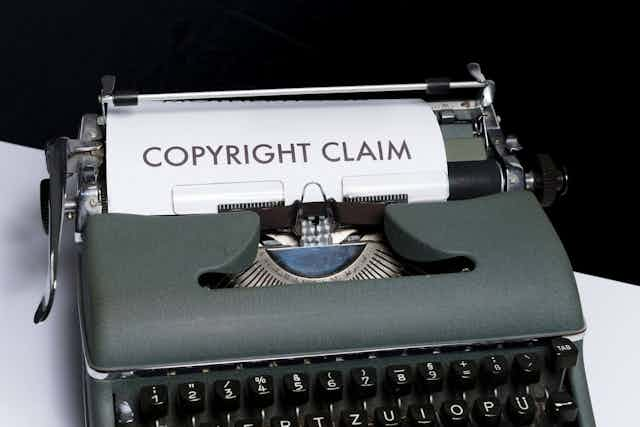Creative Commons licenses


Holding a degree in Business Administration and Programming, Pablo established Legis Music in 2016. With a focus on the royalty-free music industry, he has contributed extensively to the field, authoring over 150 articles on various aspects of music licensing. His efforts have been instrumental in developing one of the most straightforward and liberal music licensing frameworks available today.
Key Takeaways
- All created material is automatically protected by copyright from the moment of creation, giving exclusive rights to the author for a specific period.
- Creative Commons licenses allow creators to maintain copyright while permitting others to use, distribute, and modify their works under certain conditions.
- These licenses are flexible, free, simple to use, legal, recognized internationally, and irrevocable once applied.
- Creative Commons licenses include conditions like Attribution (BY), Non-Commercial (NC), Non-Derivative (ND), and Share Alike (SA), and authors can choose the combination that suits their needs.
- There are six types of Creative Commons licenses, each specifying what is allowed and under what conditions, ranging from the most permissive (Attribution) to the most restrictive (Attribution-NonCommercial-NoDerivs).
- Some advantages of using these licenses are: promote wide sharing and collaboration, reduce negotiation costs, and make content accessible for various purposes.
- Some disadvantages are: usage of works depends on the author’s chosen conditions, limiting complete freedom and adaptability.
- How to use Creative Commons licenses: Creators should clearly attribute the author and specify the license terms when using CC-licensed content. Licensing your own work can be done through platforms or the Creative Commons website.
Currently, there is a wide range of content on the Internet, which makes the creation and distribution of creative works, such as music, much more accessible than a few years ago, when technologies did not yet exist.
As a result, there is a need to protect the copyright of works and, at the same time, to regulate access to and use of such works.
 Thus, in 2001, a non-profit organization called Creative Commons was created in San Francisco (USA), which began to offer licenses so that authors and creators of works could share them in an open, legal and standardized way, facilitating access to the public.
Thus, in 2001, a non-profit organization called Creative Commons was created in San Francisco (USA), which began to offer licenses so that authors and creators of works could share them in an open, legal and standardized way, facilitating access to the public.
This article will explain in detail all the relevant aspects about Creative Commons licenses, the existing types, their characteristics, conditions of use, advantages and disadvantages, as well as their correct use.
Before going into what these licenses consist of, it is necessary to know that any created material has, from the very moment it is produced, copyright; which means that only the author of the work can exploit it (distribute it, modify it, publish it…) for a period of time.
If another person wants to make use of that work during that period of time, an agreement must be reached and the authorization of the creator must be obtained.
Once the term is over, the work becomes Public Domain , so it could be used freely (in this article of the web you can find more information).

However, during this period of exclusivity, the author of the work can make it available to others in an open way without having to give exclusive permissions to each person who requests it and at the same time respecting the Intellectual Property Law , thanks to open licenses.
One of the best known open licensing systems are the Creative Commons Licenses.
What are Creative Commons licenses?

Creative Commons licenses are a set of licenses that allow creators -also called licensors– of works to keep the copyright, while authorizing third parties to use, distribute and modify them, under a series of conditions.
As mentioned above, they are not an alternative to copyright, but rather respect it, but with the intention of promoting open knowledge, with the author deciding which of these rights he/she cedes.
Characteristics of the licenses
Although there are different types of Creative Commons licenses subject to different conditions, all of them comply with a series of characteristics:
- Flexibility. They allow authors to define and decide themselves the uses that third parties can give to their works.
- Free of charge. They do not imply any cost for the author or for the person who wishes to use them.
- Simple. All licenses are easy to use, as they are designed to be understandable to everyone.
- **Legality. **Because they are based on copyright, the terms are clear and legally fair.
- Recognized. The licenses are used worldwide and are adapted to the copyright laws of various countries.
- Irrevocable. Once the works have been protected with one of the Creative Commons licenses, they are exposed to the public and there is no way back: the rights assigned cannot be recovered.
In addition, Creative Commons licenses are among the best known and most widely used licenses for licensing digital resources internationally, which makes it easier for users to recognize the conditions of use of the works at the time.
Conditions of Creative Commons licenses
As explained in the previous sections, these licenses allow authors to choose and combine between 4 conditions to authorize the use of their work.

Normally, they do not prohibit reproduction or copying as long as there is no profit motive and the only condition is usually that the credits are cited in the medium where such reproduction is made.
However, it is necessary to check each time you want to use a song that is under these licenses what are their conditions of use to avoid making mistakes.
Thus, the possible conditions are:
- Attribution (BY). This condition states that users must attribute and acknowledge the original authorship of the work, either by typing the author’s name or by providing a link to the work.
- Non-Commercial (NC). Prohibits the sale and use of the work for commercial purposes.
- Non Derivative (ND). Does not allow the original work to be modified.
- Share Alike (SA). Contrary to the previous one, this condition establishes that users may modify the original work, as long as it is attributed to the original author and shared under the same license.
Thus, authors can choose which of these conditions their Creative Commons licenses should include.
For example, they can choose to allow modification of their work, but only if it is attributed to the original author and shared under the same license. Or they can allow commercial use of their work, as long as it is attributed to the original author.
 In general, Creative Commons licenses are designed to be flexible and allow authors to choose the terms that best suit their needs and objectives.
In general, Creative Commons licenses are designed to be flexible and allow authors to choose the terms that best suit their needs and objectives.
Types of licenses
here are six different types of Creative Commons licenses that authors can use to protect their work and allow its use by others.
- Attribution (BY)
What does it allow? Allows sharing and adapting the work (remixing, transforming, and building upon the original work), even for commercial purposes.
*Under what conditions? *The original authorship of the work must be appropriately acknowledged.
- Attribution-ShareAlike (BY-SA)
What does it allow? Allows sharing and adapting the work, even for commercial purposes.
*Under what conditions? *The original authorship must be acknowledged, and the new creation must be licensed under identical conditions (BY-SA).
- Attribution-NoDerivs (BY-ND)
What does it allow? Allows sharing the work, even for commercial purposes.
Under what conditions? The original authorship must be acknowledged, and no modifications of the original work may be distributed.
- Attribution-NonCommercial (BY-NC)
What does it allow? Allows sharing and adapting the work.
Under what conditions? The original authorship must be acknowledged, and the work cannot be used for commercial purposes.
Attribution-NonCommercial-ShareAlike (BY-NC-SA)
What does it allow? Allows sharing and adapting the work.
Under what conditions? The original authorship must be acknowledged, the work cannot be used for commercial purposes, and the new creation must be licensed under identical conditions (BY-NC-SA).
Attribution-NonCommercial-NoDerivs (BY-NC-ND)
What does it allow? Allows sharing the work.
Under what conditions? The original authorship must be acknowledged, the work cannot be used for commercial purposes, and no modifications of the original work may be distributed.
Note that ALL of them must be attributed to the artist!
Difference between Copyright, Copyleft, Creative Commons and Public Domain music
To explain in a clear and simple way the differences between these terms, we will use a reference image, which imitates the colors of a traffic light, depending on the restrictions and limitations of each one.

First, there is the red color with a “C” symbol, referring to music with the most restrictive conditions of all: copyrighted music.
 Copyright refers to the exclusive right, granted by law, of the author of a song to exploit it for a certain period of time, so that if another person wants to use it, he/she must reach an agreement with the author (click on the link for more information about this type of music).
Copyright refers to the exclusive right, granted by law, of the author of a song to exploit it for a certain period of time, so that if another person wants to use it, he/she must reach an agreement with the author (click on the link for more information about this type of music).
n second place, with a yellow color, are the famous Creative Commons licenses.
 Its color is due to the fact that, although it offers more possibilities of use than copyrighted songs, it also has certain conditions and restrictions as we have explained above.
Its color is due to the fact that, although it offers more possibilities of use than copyrighted songs, it also has certain conditions and restrictions as we have explained above.
Just below, turning to green, we find the symbol of an inverted “C”, alluding to Copyleft.
 Copyleft is the opposite of copyright, since it is a license established by the authors of the songs that allows anyone to use, modify and distribute them with the only condition that these freedoms continue to be preserved.
Copyleft is the opposite of copyright, since it is a license established by the authors of the songs that allows anyone to use, modify and distribute them with the only condition that these freedoms continue to be preserved.
The term itself is a play on copyright, as “right” is replaced by “left“, which in English means “let”; simply put, copyleft could be said to mean “let copy”.
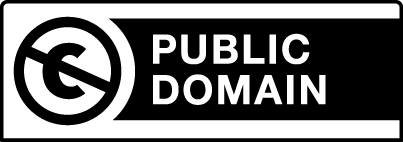
Finally, the Public Domain songs, represented in the traffic light with a “C” crossed in red.
Public Domain music is music that is not protected by copyright, so it can be used without the need for any permission or payment to the author.
The fundamental difference between Public Domain and Copyleft is that Public Domain songs “do not belong to anyone”; that is, the authors themselves no longer own the rights to them.
This happens for two reasons:
- They are songs that were “born” in the Public Domain, because they were created before copyright existed.
- They are songs whose copyrights have expired beyond their term of validity -70-95 years after the death of their author.
As you can see, there are many possibilities in terms of licenses and copyrights, so it is necessary to be clear about what each one consists of and what their conditions and restrictions are to avoid problems when using songs in any type of project.
Advantages and disadvantages of Creative Commons licenses
If there is one thing that distinguishes Creative Commons licenses from other licenses, it is the freedom they offer to share and offer music as widely as possible to other people, since the rights they offer are designed for the exchange, adaptations and modifications of the original work.
In addition, they are totally free and accessible, so the negotiation costs are totally reduced, saving time for both the creators and the public wishing to obtain them.
However, it is not all advantages.
The major drawback of Creative Commons licenses is that the uses that can be given to the songs depend entirely on the conditions set by the author, which means that they cannot always be used freely and adapted to one’s own needs.
We have already explained what Creative Commons licenses are, what are their conditions and the existing types, as well as the advantages and disadvantages of their use.
However, the practical part is still missing: how to use these licenses and how to license songs with Creative Commons?
How to use Creative Commons licenses?
Returning to the Creative Commons licensing forum, the BY-Attribution condition appears, which requires attribution to the author of the original song.
 Attribution means that you will have to explain in the description of your video (or within the project, in case it is not a video) who is the author of the music and where you downloaded the music.
Attribution means that you will have to explain in the description of your video (or within the project, in case it is not a video) who is the author of the music and where you downloaded the music.
There is no specific formula for this, however, it is necessary to name the author, the source and the type of license.
In addition, it is advisable to add the title of the song.
For example, if you use the song called ‘Odyssey Drums’ by the artist Kevin MacLeod and you have downloaded the song from the website Incompetech.com, you should write a sentence like this:
Odyssey Drums, by Kevin MacLeod (incompetech.com) is licensed under a Creative Commons license (Creative Commons – Attribution International 4.0 – CC BY 4.0).
These are the steps to use songs under Creative Commons licenses, but they change if you are the one who shares the songs protected with these licenses.
How to license your songs with Creative Commons?
To license songs with Creative Commons you can follow two paths, both equally easy and fast:
- Share the songs on one of the platforms with which Creative Commons works. These are:

- Use the wizard available on the Creative Commons website itself, which tells you which Creative Commons license is best suited to your needs.
As you can see, if you believe that the philosophy of these licenses is in line with what you are looking for, that is, to share your songs freely but without losing your authorship, you only have to choose one of the two options above and you can offer your creations to the public without worries.
Conclusion
 In short, Creative Commons licenses are a useful and flexible tool for content creators who want to share their work in an open and accessible way, while maintaining certain rights over their work, allowing them to specify how they want their work to be used.
In short, Creative Commons licenses are a useful and flexible tool for content creators who want to share their work in an open and accessible way, while maintaining certain rights over their work, allowing them to specify how they want their work to be used.
Thus, some conditions have been established which, from their combination, create 6 different types of licenses, each one with different characteristics; always sharing the condition of attributing the author of the work.
In addition, it is necessary to know the different terms and types of licenses in the world of music to be able to choose appropriately according to the needs of each person, also avoiding any problems arising from copyright.
 Finally, licensing your own songs with Creative Commons is really easy and fast, so anyone who wants to share their work for everyone to enjoy, just share it on one of the Creative Commons partner sites or use the virtual wizard on the website.
Finally, licensing your own songs with Creative Commons is really easy and fast, so anyone who wants to share their work for everyone to enjoy, just share it on one of the Creative Commons partner sites or use the virtual wizard on the website.
If after reading this guide you still have any questions about Creative Commons licenses, feel free to visit our contact page.
We will be happy to help you!
References
- Frequently asked quiestions . Creative Commons
- Copyright, Creative Commons, and confusion. The Scholarly Kitchen
- Creative Commons Licenses explained. Sarafhawkins
- A simple guide to Creative Commons. Teaching and learning
- Creative Commons License: pros and cons. Studiobinder
- Key Takeaways
- What are Creative Commons licenses?
- Characteristics of the licenses
- Conditions of Creative Commons licenses
- Types of licenses
- Difference between Copyright, Copyleft, Creative Commons and Public Domain music
- Advantages and disadvantages of Creative Commons licenses
- How to use Creative Commons licenses?
- How to license your songs with Creative Commons?
- Conclusion
- References
Why you can trust Legis Music
-
We offer comprehensive and expertly information about music licensing since 2016.
-
The website regularly updates its content to reflect the latest changes in music law, ensuring accurate information.
-
Our dedication to clarity and accuracy in explaining music rights and licensing issues builds trust among musicians, producers, and clients.
Get a Lifetime Music License
Never worry again about copyrights or claims. Unlimited downloads and social media channels. Use the music wherever you want!
Get a License